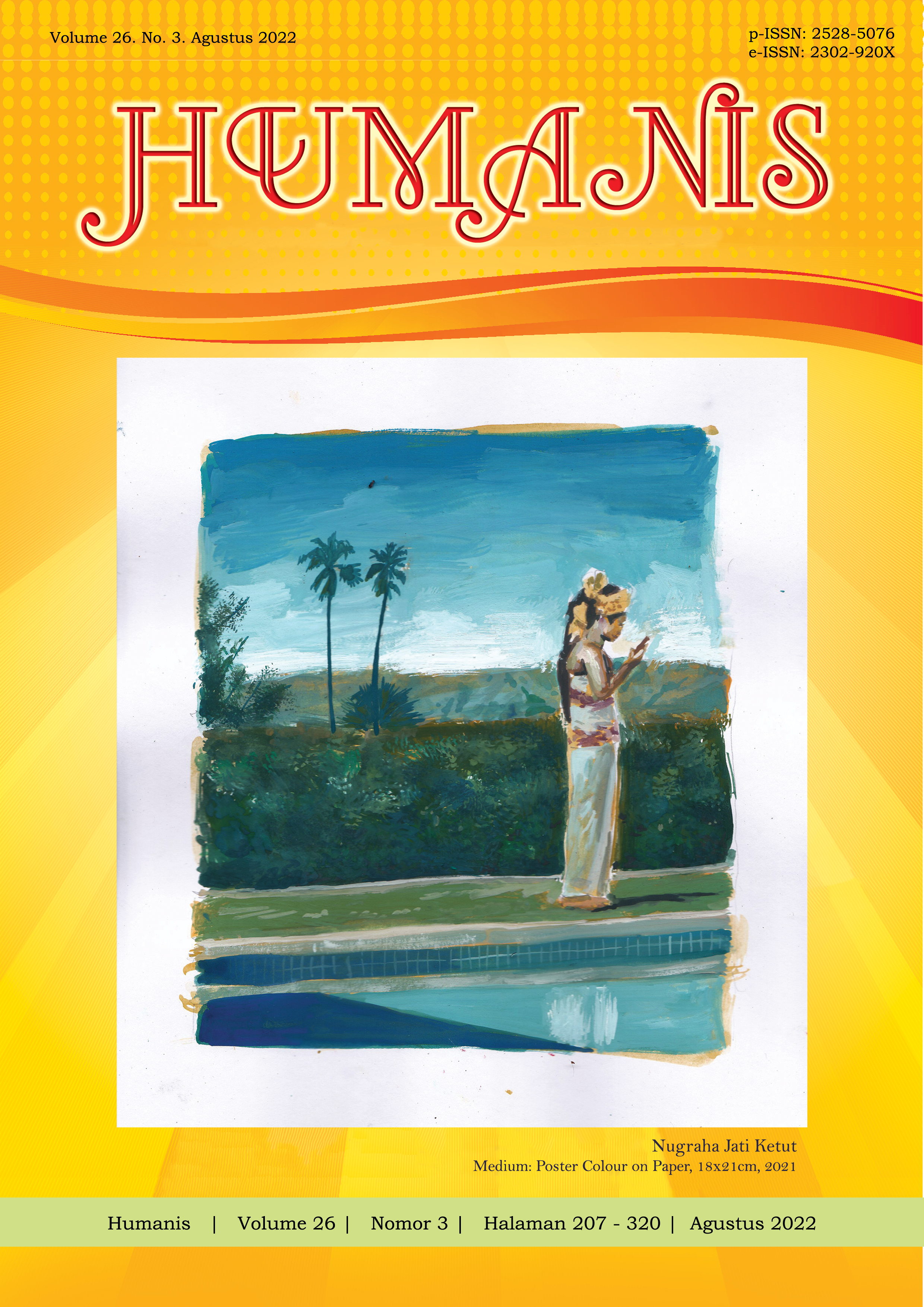Mapping Grammatical Relations of English Verbs
Abstract
This study entitled Mapping Grammatical Relations of English Verbs, concerns on numbers of arguments that a verb could assign and how an argument is syntactically motivated in clauses of which the mood is declarative. This study involves to library research, and the method that was applied in this study was descriptive method which describes linguistics phenomena like what it actually is. The data of this study were taken from the Corpus of Contemporary American English (COCA) by inputting verbs those have been determined to the website http://www.english-corpora.org/coca/. The main theory applied in this study was Kroeger’s (2005) regarding to transitivity and grammatical relation. Based on the analysis, verbs in English require argument(s), terms or obliques. An intransitive verb assigns a term that stands as subject, a transitive verb assigns two terms those stand as subject and primary object. On the other hand, a ditransitive verb assigns three terms those stand as subject, primary object and secondary object. In addition, there is an argument that stands as oblique.
Downloads
References
Aryani, M. R. D. (2019) The Ellipsis of Grammatical Function in Coordinative Structure of Japanese Language. International Journal of Linguistics, Literature and Culture. Vol.2. No.2, pp 167-178.
Bickel, Balthasar and Yogendra P Yadava. (2000). A Fresh Look at Grammatical Relation in Indo-Aryan. Lingua. Vol.110. No.5, pp 343-373.
Branigan, H. P., Pickering, M. J. and Tanaka, M. (2008). Contributions of Animacy to Grammatical Function Assignment and Word Order during Production. Lingua. Vol. 118. No.2, pp 172-189.
Darlina, Lien. (2016). Relational Grammar of Passive in Japanese. International Journal of Linguistics, Literature and Culture. Vol.2. No.2, pp 167-178.
Deborah, I. A. (2018). The Syntactic Functions of Relative Clauses in A Game of Thrones Novel. Humanis. Vol.22. No.2, pp 289-296.
Dewi, I G A Indah Maha. (2018). The Morphosyntax of English Deverbal Noun in the Straits Times Website. Humanis. Vol.22. No.3, pp 742-750.
Kreidler, Charles W. (2002). Introducing English Semantics. Routledge, New York.
Kroeger, Paul R. (2004). Analyzing Syntax A Lexical-functional Approach. Cambridge University Press, Cambridge.
Kroeger, Paul R. (2005). Analyzing Grammar An Introduction. Cambridge University Press, Singapore.
Marantz, Alec. (2013). Verbal Argument Structure: Events and Participants. Lingua. Vol.130. No.9, pp. 152-168.
Mateu, Jaume. (2014). Argument Structure. In: Carney, A., et al. The Routledge Handbook of Syntax. Routledge, New York.
Miller, Jim. (2002). An Introduction to English Syntax. Edinburgh University Press, Edinburg.
Nikolaeva, Irina. (1999). Object Agreement, Grammatical Relations, and Information Structure. International Journal of Studies in Language. Vol.23. No.2, pp. 331-376.
Taule, M. et al. (2005). Mapping Syntactic Function into Semantic Roles. Proceedings of the Fourth Workshop on Treebanks and Linguistics Theories, Barcelona: 9-10 December 2005. Pp.185-196.
Udayana, Nyoman. (2016). Argument Structure at Syntax-Discourse Interface. Proceedings of the Third International Conference on English across Culture, Singaraja: 11-12 November 2016. Pp.28-38.
Wechsler, Stephen and I Wayan Arka. (1998). Syntactic Ergativity in Balinese: an Argument Structure Based Theory. Natural Language and Linguistics Theory. Vol.16. Issue 2, pp 387-442.
Wong, S. H. S. and Peter Hancox. (1998). An Investigation into the Use of Argument Structure and Lexical Mapping Theory for Machine Translation. Proceedings of the 12th Pacific Asia Conference on Language, Information and Computation, Singapore: 18-20 February 1998. Pp.334-339.
Yuniartati, Made Dwi. (2017). Syntactic Functions of Deverbal Nouns Found in Huffington Post Website: Morphosyntactic Approach. Humanis. Vol.19. No.1, pp 10-18
Yani, La. (2018). Transitivity Construction of Verbal Clause in Ciacia Language. International Journal of Linguistics, Literature and Culture. Vol.4. No.3, pp 15-23.
Zaim, M. (2014). Metode Penelitian Bahasa: Pendekatan Struktural. FBS UNP Press, Padang.


















